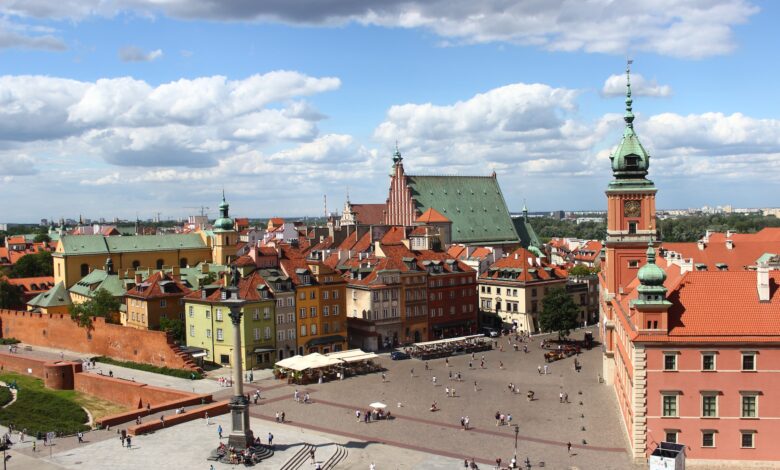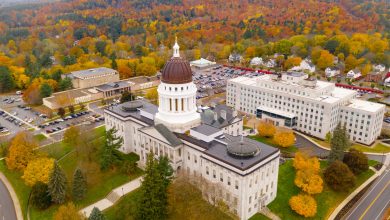
[ad_1]
Heads up: some of the links on this site are affiliate links. If you click and make a booking or purchase, I’ll make a commission (at no extra cost to you). I partner with companies I personally use and the $$ goes towards creating more awesome, free travel content.
As the capital of Poland, Warsaw is a buzzing city that’s home to some of the country’s best museums, restaurants and cultural institutions. After being largely destroyed during World War II, its Old Town has been rebuilt from the rubble and is now UNESCO World Heritage-listed.
If you’re planning a Polish getaway to this fascinating city, we’ve got answers to some of the most commonly asked questions about travelling here. You can find a diverse range of holiday rentals to suit all budgets through platforms such as Rentola Warsaw, ensuring you have a comfortable and convenient base for sightseeing. There are options for those who want to be in the heart of all the sightseeing action in the Old Town, as well as apartments in the bohemian district of Praga and the atmospheric streets of New Town.
When is the best time to visit Warsaw?
While Warsaw tends to be busiest during the summer months when Europeans are on their annual vacation, it’s a year-round destination with each season having its charms. Summer temperatures tend to be mild (around 24°C), which is ideal for being out and about sightseeing. However, holiday rental prices are usually at their highest during this period due to the increased demand. June is the wettest month of the year in Warsaw, so be sure to pack a light waterproof jacket if you plan on visiting during this month.
While the temperatures are cooling in autumn, the months of September through to November are still a great time to visit, with fewer crowds and some great accommodation deals to be found. In December and January, you’ll get to experience Warsaw’s magical Christmas decorations, which illuminate the streets of the Old Town. Don’t miss the traditional Christmas market that takes place in Market Square! If you’re visiting at this time of year, make sure you come prepared with plenty of warm clothes as the temperatures can drop to around -5°C.
March to May is another relatively quiet period in Warsaw when the city is starting to awaken from its late winter slumber. Temperatures can still be incredibly chilly during the spring (down to around 3°C) but there’s plenty of warmth to be found in the city’s museums and cultural spaces.
What is the best way to get to and around Warsaw?
Warsaw is served by two international airports – Warsaw Chopin and Warsaw Modlin – with the latter favoured by low-cost carriers such as Ryanair. Warsaw Chopin is much closer to the city centre and is regularly connected by public buses and trains. International trains travelling from neighbouring European countries stop at Warsaw Central Station, from where it’s a short subway ride to the Old Town. Buses and trams also travel throughout the city and connect all of its attractions.
Where is the best place to stay in Warsaw?
As Warsaw is a large city, it’s important to find a holiday rental that is conveniently located, depending on what you want to see and do. One of the most popular areas to stay in is the Old Town, which is home to many of Warsaw’s most well-known attractions. Alternatively, you may want to stay near the Central Railway Station so that you can walk to your accommodation on arrival or get away easily if you have an early morning departure.
If you want to be near the Old Town, consider staying in the New Town, which is located just to the north of the Barbican walls. Despite its name, the district has existed for more than 500 years and is home to several palaces and museums that are worth exploring. On the opposite bank of the Vistula River from the Old Town is the Praga district, a hip, bohemian area that is one of the few parts of Warsaw that wasn’t destroyed during World War II.
Which time zone is Warsaw in?
Warsaw is located in the Central European time zone, which is one hour ahead of London and six hours ahead of New York. If you’re flying from Tokyo, you need to turn your clock back eight hours. At the height of summer, Warsaw doesn’t get dark until around 10 pm while in the depths of winter, the sun sets somewhere between 3 and 4 pm.
Is Warsaw an expensive place to visit?
The official currency of Poland is the złoty, which is the most traded currency in Central and Eastern Europe. Warsaw offers value for money when it comes to accommodation and living costs, with lots of affordable restaurants where you can dine for around 10 Euros per person. If you’re looking to exchange money, the machines in the city centre tend to offer more favourable rates than the ones at Warsaw Chopin Airport.
Is Warsaw safe to visit?
Despite being Poland’s biggest city, Warsaw experiences very low levels of violent crime, making it a generally safe city to visit. As in all big, urban centres, you should remain wary of pickpockets when travelling on public transport and avoid walking through some neighbourhoods at night. It’s a good idea when booking your holiday rental to ask your host about any areas that should be avoided, particularly if you are travelling alone.
[ad_2]
Source link






